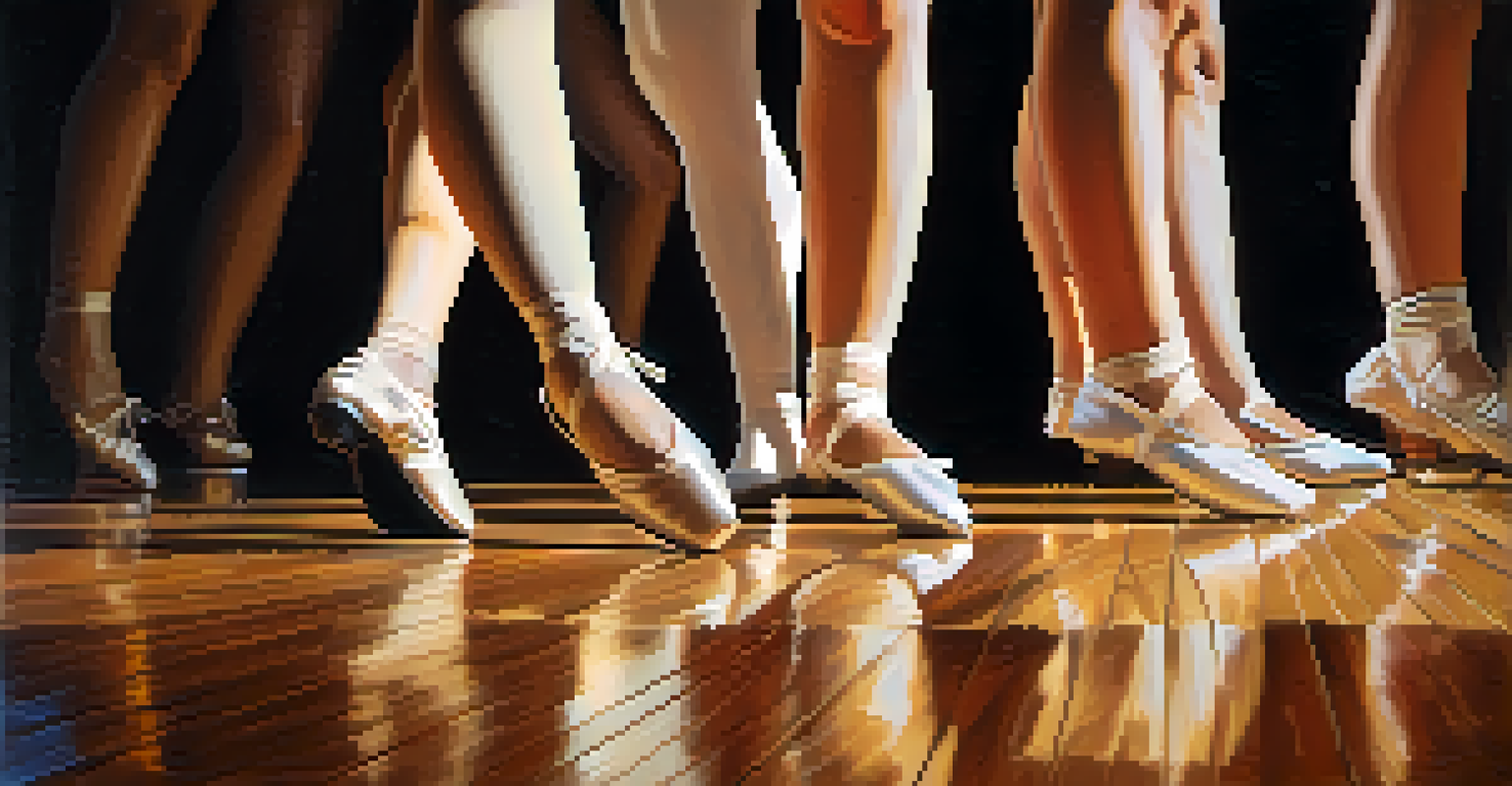Examining the Impact of Dance Accessibility on Community

Understanding Dance Accessibility in Communities
Dance accessibility refers to the ability for all individuals, regardless of ability, age, or background, to participate in dance activities. It's about removing barriers that might prevent someone from dancing, whether those are physical, financial, or social. When dance is accessible, it opens up a world of expression and connection for everyone in the community.
Dance is the hidden language of the soul.
Communities flourish when dance is inclusive, as it encourages diverse participation. People from various walks of life come together, sharing their unique stories and cultures through movement. This melting pot of experiences enriches the community, fostering a sense of belonging and mutual respect.
Moreover, accessible dance programs can help break down stereotypes and misconceptions about different abilities. By witnessing the joy of dance in its many forms, community members can develop greater empathy and understanding, ultimately leading to a more cohesive society.
The Role of Dance in Fostering Social Connections
Dance is inherently social, creating an environment that encourages interaction and collaboration. When communities offer accessible dance programs, they provide a space where people can meet, bond, and form friendships. This social aspect of dance helps to combat feelings of isolation and loneliness, which are increasingly prevalent in our society today.

For example, group dance classes can serve as a natural icebreaker, making it easier for individuals to connect. As participants learn new moves together, they share laughter, challenges, and triumphs, building relationships that often extend beyond the dance floor. This sense of camaraderie can lead to stronger community ties.
Dance Accessibility Enriches Communities
By removing barriers, accessible dance fosters inclusive participation, enhancing community connections and cultural exchange.
Additionally, dance encourages teamwork and communication, skills that are essential in everyday life. These social skills not only enhance the dance experience but also contribute to personal development, making individuals feel more confident and connected within their community.
Economic Benefits of Accessible Dance Programs
Investing in accessible dance programs can yield significant economic benefits for communities. When people engage in dance, they often spend money on classes, attire, and events, stimulating the local economy. This increased spending can support local businesses and create jobs, further enhancing community vitality.
The dance is a poem of which each movement is a word.
Moreover, dance programs that are accessible to everyone often attract a diverse audience, including tourists. Festivals, performances, and workshops can draw visitors who contribute to the local economy, benefiting restaurants, hotels, and shops. This influx of visitors can help elevate the community's profile and promote its cultural offerings.
Ultimately, the economic impact of dance accessibility goes hand-in-hand with its social benefits. A thriving dance scene can create a vibrant community atmosphere, making the area more appealing for new residents and businesses alike.
Enhancing Mental Health through Dance Accessibility
Dance is not just a physical activity; it also plays a significant role in mental well-being. Accessible dance programs provide an outlet for self-expression, helping participants to release emotions and reduce stress. This therapeutic aspect of dance can be particularly beneficial for individuals facing mental health challenges.
Engaging in dance can boost mood and increase feelings of happiness, thanks to the endorphins released during physical activity. For many, a community dance class becomes a safe haven where they can escape their daily struggles and connect with others who share similar experiences. This supportive environment can be invaluable for personal healing.
Dance Boosts Mental Health Benefits
Engaging in accessible dance programs provides emotional release, reduces stress, and builds self-esteem for participants.
Furthermore, the sense of achievement that comes from learning new dance moves or performing can build self-esteem and confidence. By making dance accessible, communities can empower individuals to take charge of their mental health, leading to a more resilient population.
Promoting Diversity through Inclusive Dance Practices
Inclusive dance practices celebrate diversity, allowing individuals from various backgrounds to express their unique cultural identities. This celebration of diversity enriches the community, creating a tapestry of traditions and stories shared through movement. Dance becomes a powerful tool for cultural exchange and understanding.
When dance programs reflect a variety of styles and influences, they attract participants from different demographics. This diversity not only enhances the dance experience but also encourages open dialogue among community members. As people share their cultural backgrounds, they foster respect and appreciation for differences.
Moreover, promoting diversity through dance can challenge societal norms and stereotypes. By showcasing diverse talent and experiences, communities can reshape perceptions and create a more inclusive environment for all.
Challenges in Achieving Dance Accessibility
While the benefits of dance accessibility are clear, there are still challenges that communities must overcome. Financial constraints often limit the availability of adaptive dance programs, making it difficult for everyone to participate. Funding and resources are essential to ensure that dance is accessible to all, regardless of economic status.
Additionally, there may be a lack of awareness or understanding regarding the importance of inclusive dance practices. Some community leaders may not recognize the potential benefits of dance accessibility, leading to missed opportunities for growth and connection. Education and advocacy are crucial in addressing these gaps.
Economic Growth through Dance Initiatives
Investing in inclusive dance programs stimulates local economies by attracting diverse audiences and promoting community vitality.
Finally, physical barriers, such as the design of dance studios or performance spaces, can hinder participation. Communities need to prioritize accessibility in their facilities to truly embrace the concept of inclusive dance, ensuring that everyone has the opportunity to join in on the fun.
Future Directions for Dance Accessibility Initiatives
Looking ahead, communities can take proactive steps to enhance dance accessibility through innovative initiatives. Collaborating with local organizations and dance studios can create more inclusive programming that caters to diverse populations. By pooling resources and expertise, communities can develop programs that truly reflect their unique demographics.
Technology also offers exciting possibilities for increasing accessibility in dance. Virtual classes and online workshops can break down geographical barriers, allowing individuals from various locations to participate. This can be especially beneficial for those with mobility challenges or those living in remote areas.

Ultimately, the future of dance accessibility lies in ongoing dialogue and collaboration among community members. By listening to the needs and desires of diverse populations, communities can create vibrant dance scenes that foster inclusion, connection, and joy for everyone.